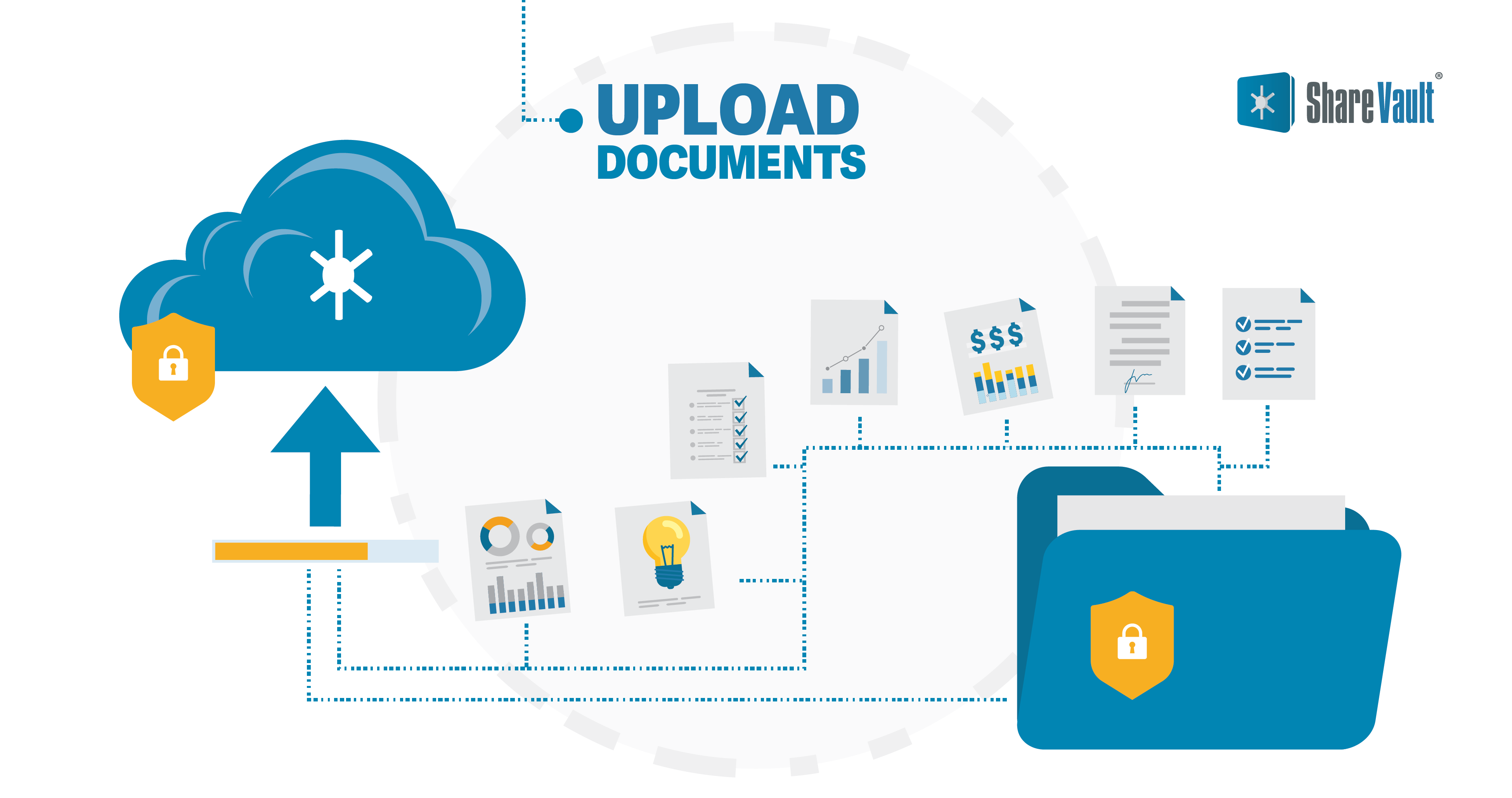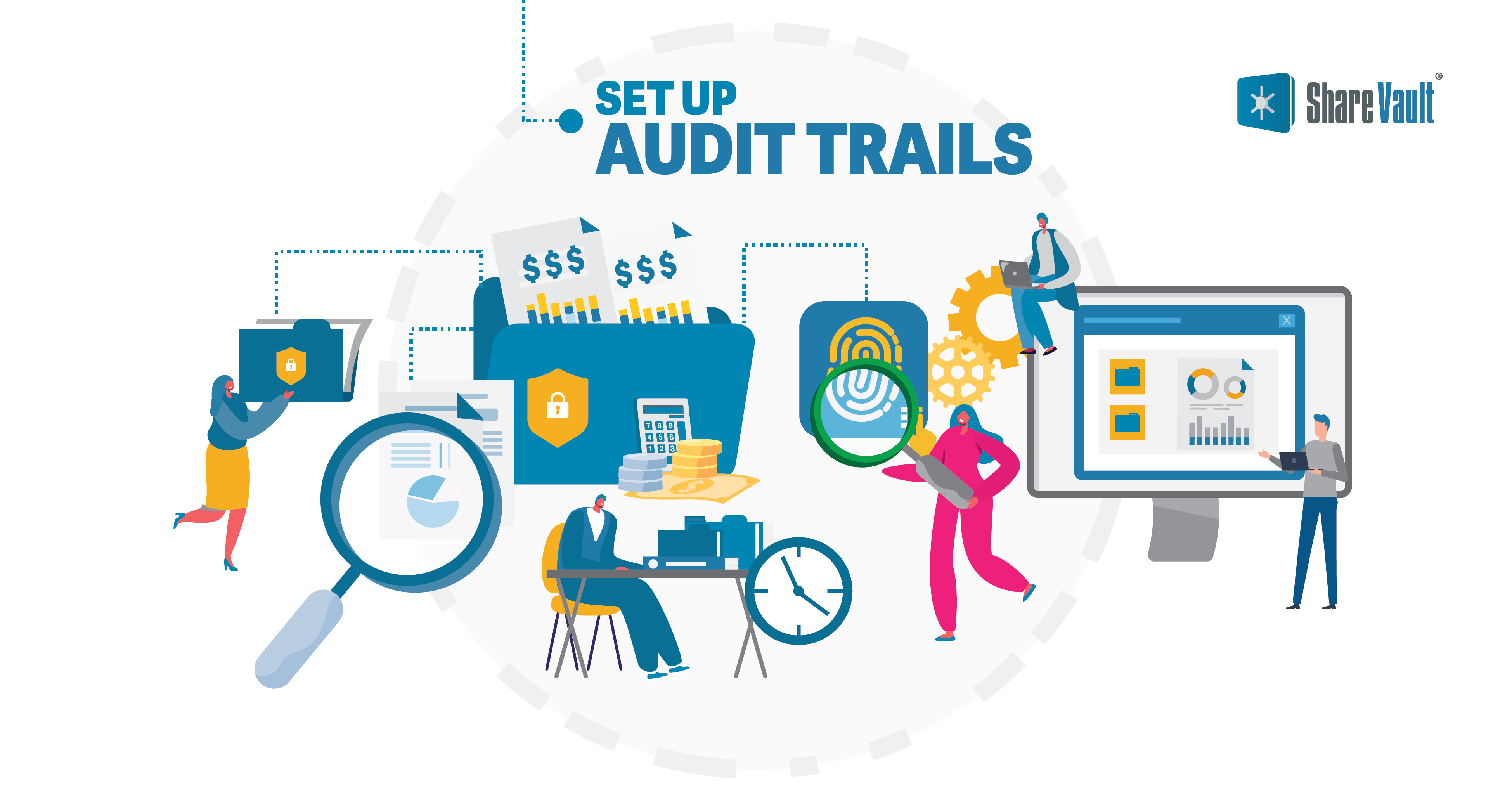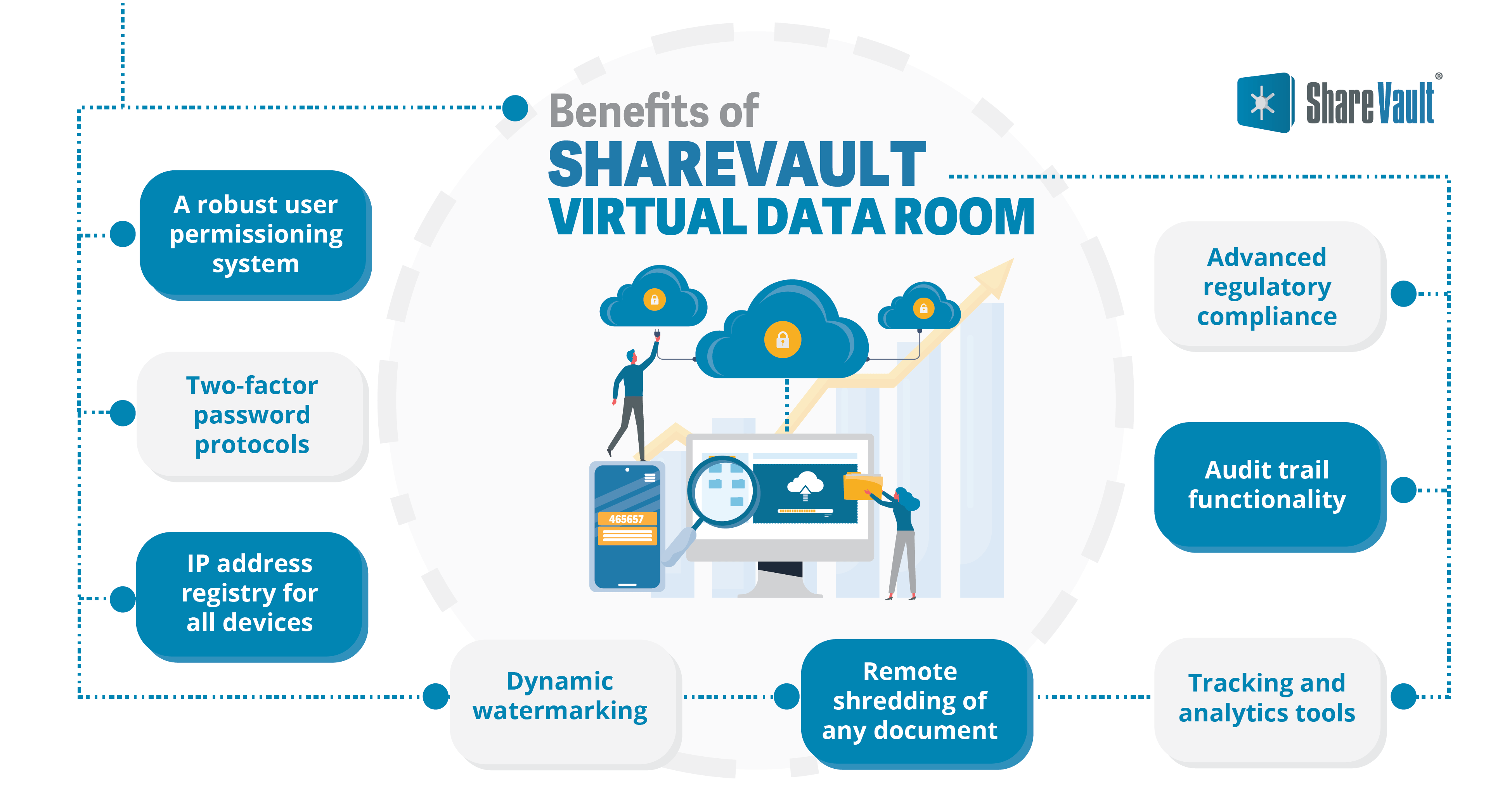What is a Virtual Data Room?
A Virtual Data Room (VDR), also known as a Virtual Deal Room, is an online platform that provides a secure way to share confidential documents internally and with third parties. A VDR is used for vital business applications such as:
- Mergers & acquisitions (M&A) due diligence
- Capital fundraising
- Partnering & licensing
- Restructuring, divestitures, and bankruptcy
- Legal court case preparation and contracts
- Product development for the life sciences, technology, and commercial enterprises
- Similar critical processes in Energy, Real Estate, and other industry verticals
How Do Virtual Data Rooms Work?
A virtual data room provides a secure and efficient way for organizations to share confidential information with authorized parties while maintaining strict control over access and permissions. Here’s how a VDR works:
Choose a VDR Provider
There are a number of VDR providers, typically offering services on a subscription basis. Choose one with an established track record in your industry and that has attained multiple security certifications. Then look for software features that streamline document organization and storage and improve how users can collaborate.
Set Up the VDR
The VDR client company or organization sets up a virtual data room, often with the help of the VDR provider's support team. Initial organization includes creating folders and folder hierarchies.
Upload Documents
The client uploads confidential documents and data files to the virtual data room. Documents might include financial records, legal and vendor contracts, intellectual property files, and due diligence reports. Look for a VDR provider that offers the ease of use of drag-and-drop uploads and the efficiency of bulk uploads and integration with file sharing apps like Box, DropBox, Google Drive, and Microsoft SharePoint and OneDrive. Once files are uploaded, organize them in their appropriate folders. If you’ve chosen the right VDR provider, you can speed file organization with hierarchical tags, a hashtag that allows the administrator to post a document in multiple folders, without the need to manually duplicate and repost the same document. With the right provider, all uploaded documents are automatically encrypted to ensure maximum security.

Set User Permissions
Not all users need access to all documents, and some collaborators are invited into the VDR for a limited time. Users typically include an inhouse project team and internal and third-party collaborators and stakeholders such as company executives, legal teams, potential investors, and auditors. The VDR administrator controls access and usage through a permissioning system – defining who will have access to specific folders and documents and what uses are authorized. Permissions can be granular, defining who can access, view, download, print, or edit specific documents. User access can also be limited to a specific time period, and any user’s access can be revoked at any time.
Set Access Protocols
The VDR administrator invites users to set up passwords and enter the VDR environment. For increased security, the administrator will require a two-factor password. Users then enter their unique credentials to gain access to the documents and folders relevant to their roles.
Train Users on Document Viewing and Interaction Protocols
Authorized users can view, search, and interact with documents and data files in the VDR. In addition to interactions via a user’s web browser, some VDR providers also offer mobile apps for on-the-go access. With the right VDR provider, an organization can also make use of additional software features like document indexing, full-text search, favorites, infinite scrolling, auto-renumbering, and Q&A messaging. These document management tools make it easy for a project team and collaborating third parties to develop a proposal, and for buyers, investors, legal teams, and regulatory authorities to access and review relevant documents efficiently.
Set Up Tracking and Analytics
A quality VDR offers tracking and analytics tools that allow administrators to monitor user activity, document views, and other interactions within the data room. This information can be useful for gauging interest and engagement during fundraising and the due diligence process.
Set Up Audit Trails
A robust VDR keeps a detailed audit trail, recording every action taken within the data room, such as document uploads, downloads, changes, and the time, date, and user ID of any document interaction. Auditing allows management to measure progress and productivity and is a required feature of a regulatory audit report.

A Virtual Data Room vs. a File Sharing App
Cloud file-sharing platforms like Box, DropBox, Google Drive, and Microsoft SharePoint and OneDrive provide a convenient way to share business documents. However, today’s cybercriminals use sophisticated AI-enhanced tools to identify and crack into files posted to many file-sharing platforms or sent by email. For critical business applications like due diligence, legal contracts, partner agreements, and life science product development, a higher level of security is necessary—a virtual data room. Unlike consumer file sharing apps, a quality VDR provider includes document encryption, document and folder organizational tools, detailed analytics to help move the workflow, and activity reports that can be submitted to regulatory agencies. In addition, granular access controls and security features ensure that confidential documents never get shared with the wrong people.
Benefits of a ShareVault Virtual Data Room

Among VDR providers, ShareVault stands out as ultra-secure, with ISO 27001 and 21 CFR PART 11 certifications, life sciences HIPAA compliance, and automatic encryption of every document at the time it is uploaded. ShareVault provides all the security tools a security-conscious organization demands:
- A robust user permissioning system
- Two-factor password protocols
- IP address registry for all devices, for the internal team and collaborators
- Dynamic watermarking capability for any document
- Remote shredding of any document, even after it has been downloaded
- Tracking and analytics tools
- Audit trail functionality
- Advanced regulatory compliance including for regulated industries like finance and the life sciences
In addition to its advanced security features, ShareVault customers benefit from an intuitive user interface and the most complete set of features available:
- Easy VDR organization
- Drag-and-drop and bulk file uploads
- Integration with popular file sharing apps, including DocuSign
- Hierarchical tags for time-savings on file organization
- Favorites
- Auto-renumbering
- Advanced search, with results sorted by relevance
- Zoomable thumbnails
- Q&A feature on any document to solicit feedback from subject matter experts
- Granular user activity monitoring and reports.
ShareVault is also the exclusive provider of time-saving software:
- Due Diligence Checklist – A software template that automatically creates a Table of Contents and a folder hierarchy most often used in due diligence projects, suitable for uploading reference files like the Executive Summary, confidential information memorandums (CIM), Indication of Interest (IOI), Letters of Intent (LOI), and other documents.
- Dynamic Native File Protection (DNFP), software specifically designed to protect work-in-progress documents like due diligence analytics and reports, and IP and regulatory submissions.
- Collabloop, task management software for the collaborative redlining process of developing a contract.
Taken together, ShareVault’s advanced security and usage features make it easy for an organization to follow best practices, avoid costly mistakes, and move efficiently to a positive business outcome.
- ShareVault clients report that they save up to 15 hours per week on due diligence and reduce administrative redundancies by 30%.
- ShareVault provides every customer with a dedicated Project Manager and offers 24/7/365 support.
- Better Value for Price - ShareVault guarantees to match or beat the price of any other VDR provider. Customers can expect an average of 25% savings compared to legacy virtual data rooms.
